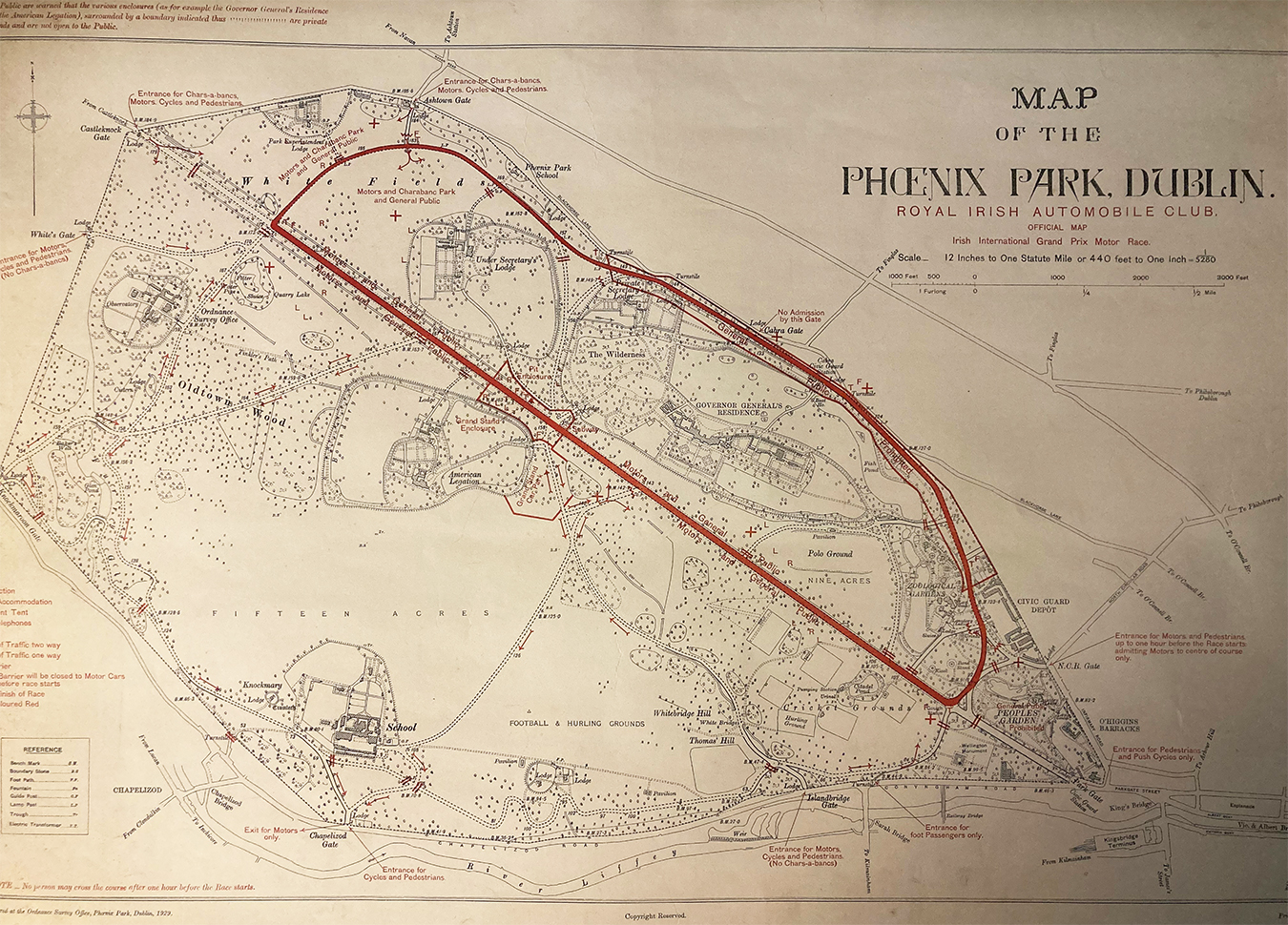The Irish International Grand Prix Motor Race
Has the Grand Prix Motor Race ever been held in Ireland?
Yes, it has. The Irish International Grand Prix Motor Race was first held in the Phoenix Park from 1929 to 1931. It was not only a triumph for the Irish motorsport community, it placed Ireland on the international radar for tourism. Dublin was in the process of re-establishing itself as a major European city and capital and hosting an International Grand Prix was an added boost to promote the Country.
The event itself and “moving monuments”
The scale of the Grand Prix was the first of its kind in Ireland. The 2-day event was held over 3 years on a 4.25 mile circuit laid out in the expansive grounds of The Phoenix Park in Dublin. The Park provided the perfect setting for the circuit – the long straight of Chesterfield Avenue, with tighter stretches of road along the outer edges of the park. The speed trials in 1903 provided the route for the races – starting just before the Viceregal Lodge(Áras an Uachtaráin) and travelling in a clockwise direction down Chesterfield Avenue, around Mountjoy corner and heading back up the North Road towards the people’s park and Parkgate street before taking a loop back round to the finish line. The Government even granted permission to temporarily remove the Phoenix Monument for the events as it was directly in the path of the race circuit. Grandstands stretching over 250 yards were erected along the route to add to the race atmosphere. To mark this great occasion, a special map was published by Tailte Éireann (formerly OSi) in 1929.
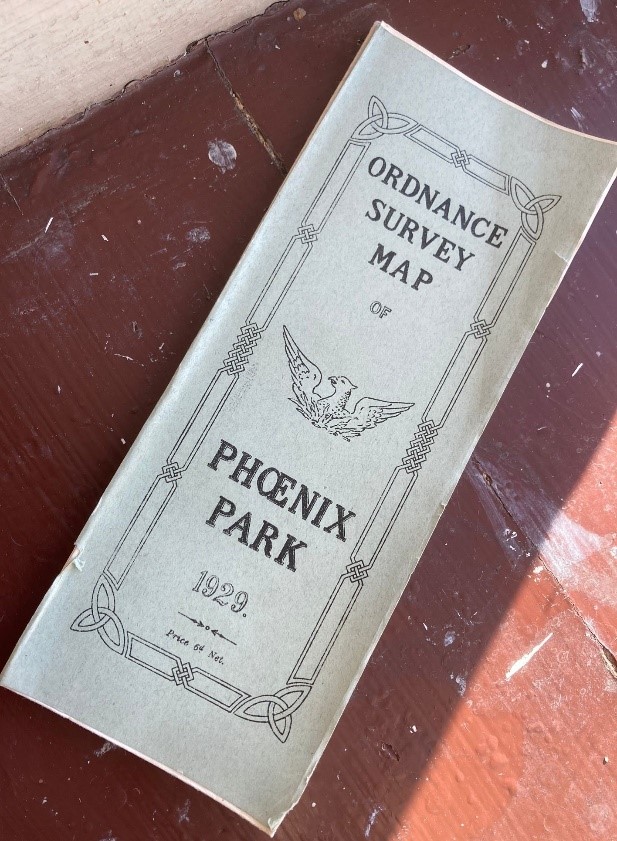
Cover of the commemorative Irish International Grand Prix Motor Race map
The commemorative map contained features and labels relating to the Grand Prix which were printed in red. The marks were superimposed on the standard map of the Phoenix Park scaled to fit on a single map sheet, for ease of use. Focusing on cartographic simplification in buildings and other features, it can be noted that the Grand Prix map is a revised version of earlier 6-inch maps of the Phoenix Park enlarged to a scale of 12 inches to 1 mile and printed in black and white.
This atypical scale was chosen because on a 6-inch map, the park would appear too small and additional features would be cluttered and difficult to read and a 25-inch map would have spread the park over several sheets.
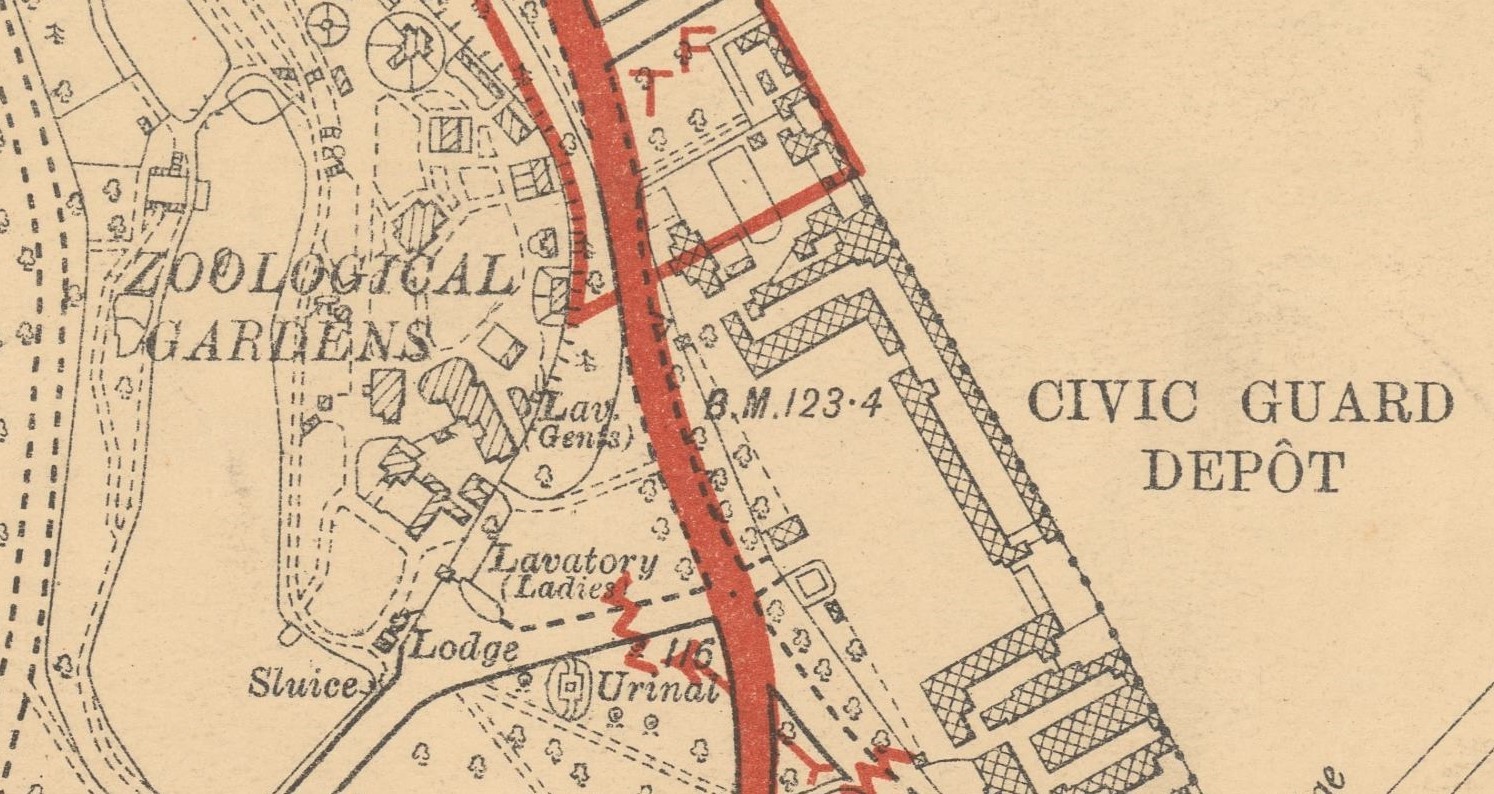
Temporary additions to the map outlined in red
One can see in these images, the addition of a subway under Chesterfield Avenue next to The Phoenix Monument. Labelled in red, this feature was created especially for the Grand Prix and superimposed on the existing maps. The subway is the only permeant feature shown in red.
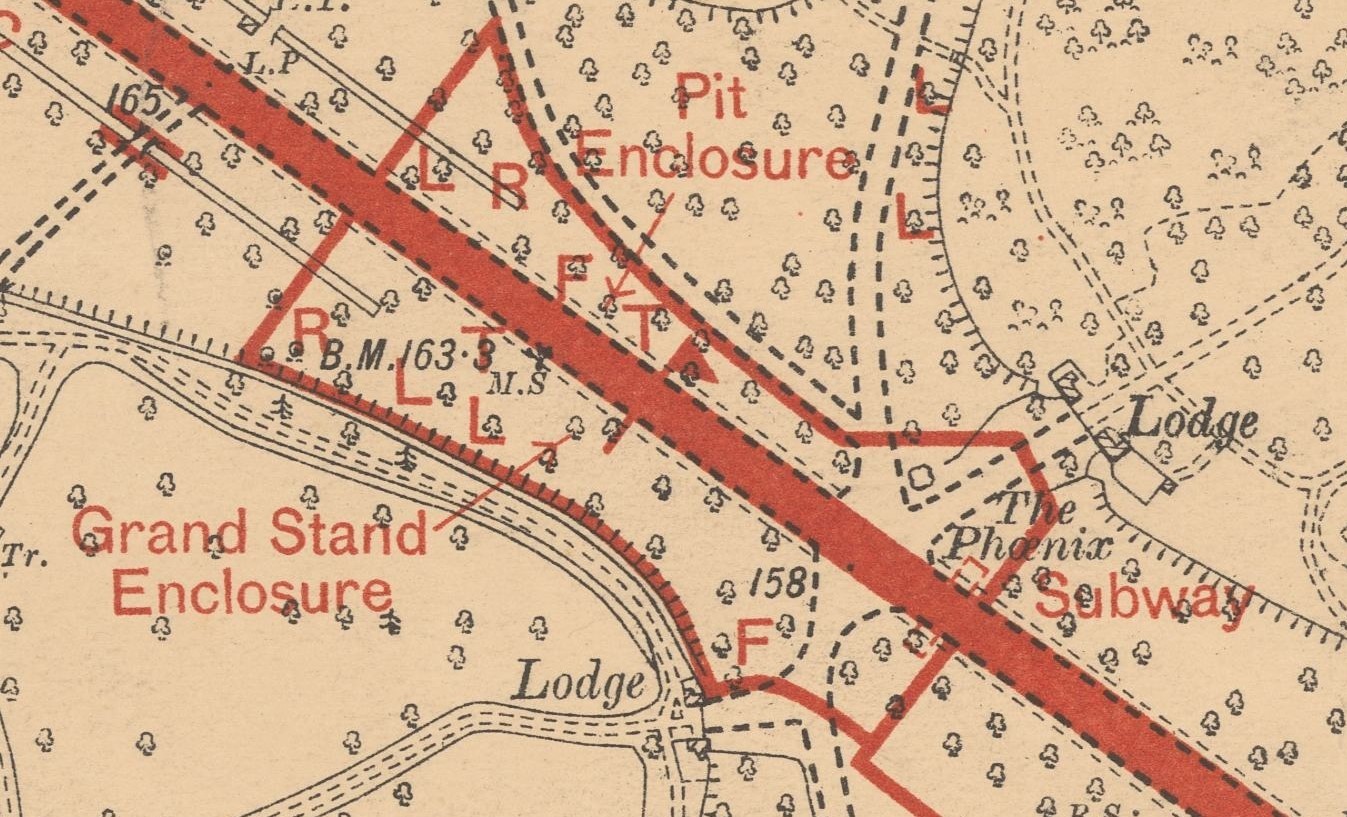
Section of Map highlighting the location of the Grandstands, pit enclosure and subway
Letters and symbols show the location of temporary facilities and features including Fire Protection, Telephones, First Aid Stations and Barriers.
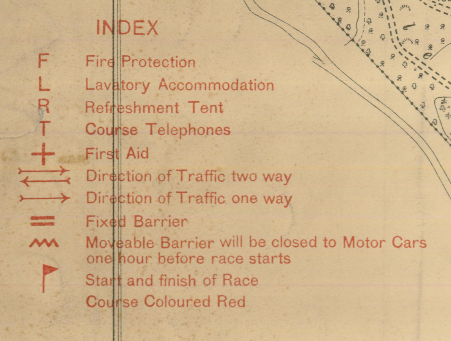
Temporary map information denoted in red on the commemorative map
What trace of the subway can you see today?
The subway appears in later maps and was used during Pope John Paul II visit to the Phoenix Park in 1979. While the subway has since been filled in, some traces of it are still visible today.
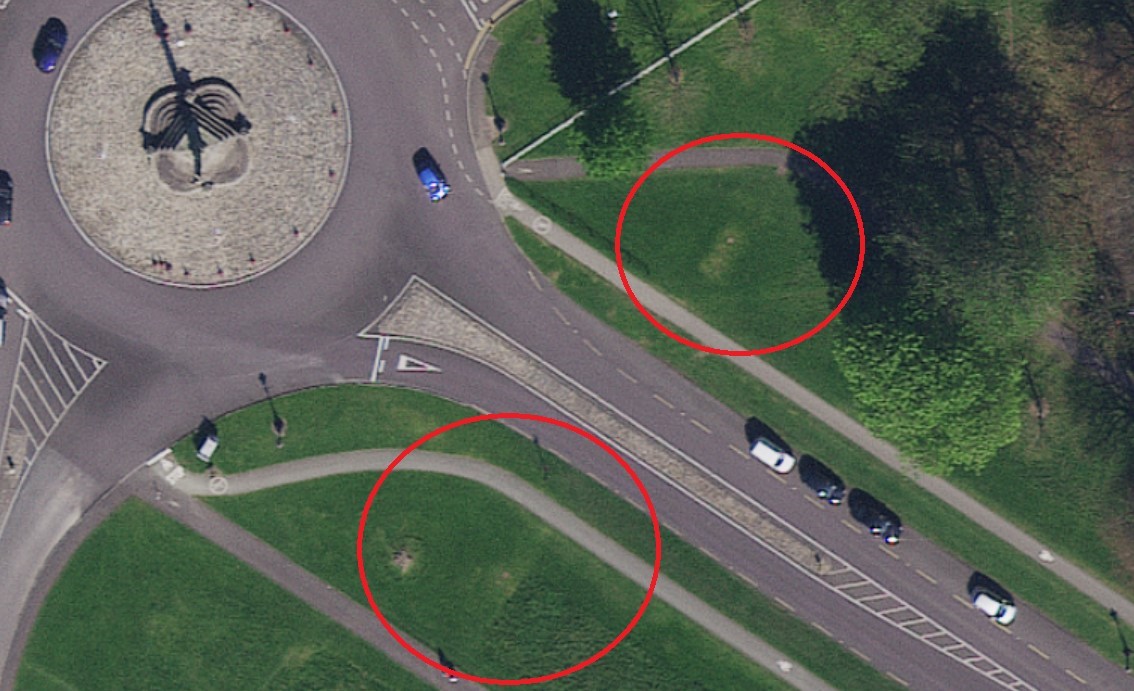
An aerial image of what is left of the subway entrances on Chesterfield Avenue today
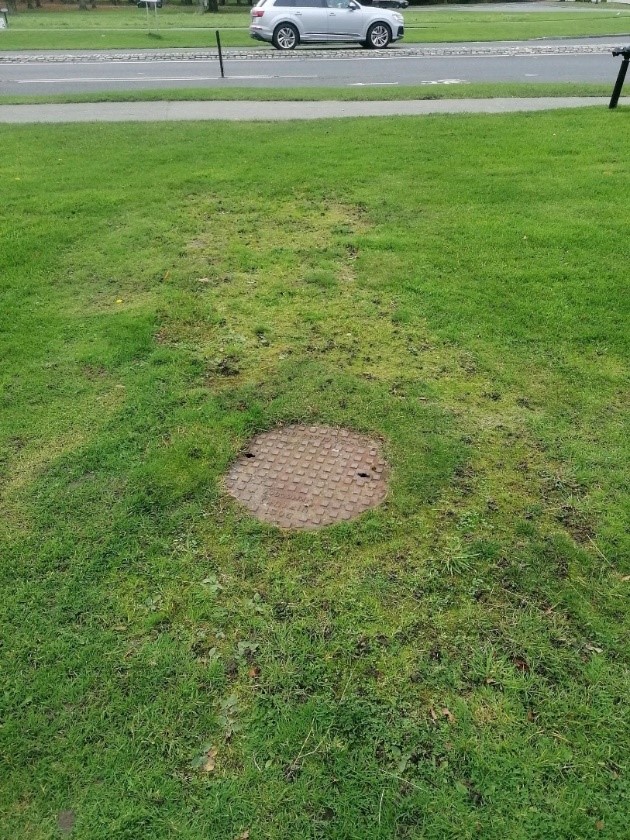
Traces of the subway entrance can be found on Chesterfield Avenue
The Viceregal Lodge and Mapping changes during this period
Other OSi maps from the same period (1921-1931) show Dublin City and the state in transition from being a dominion of the British Crown to becoming a Republic.
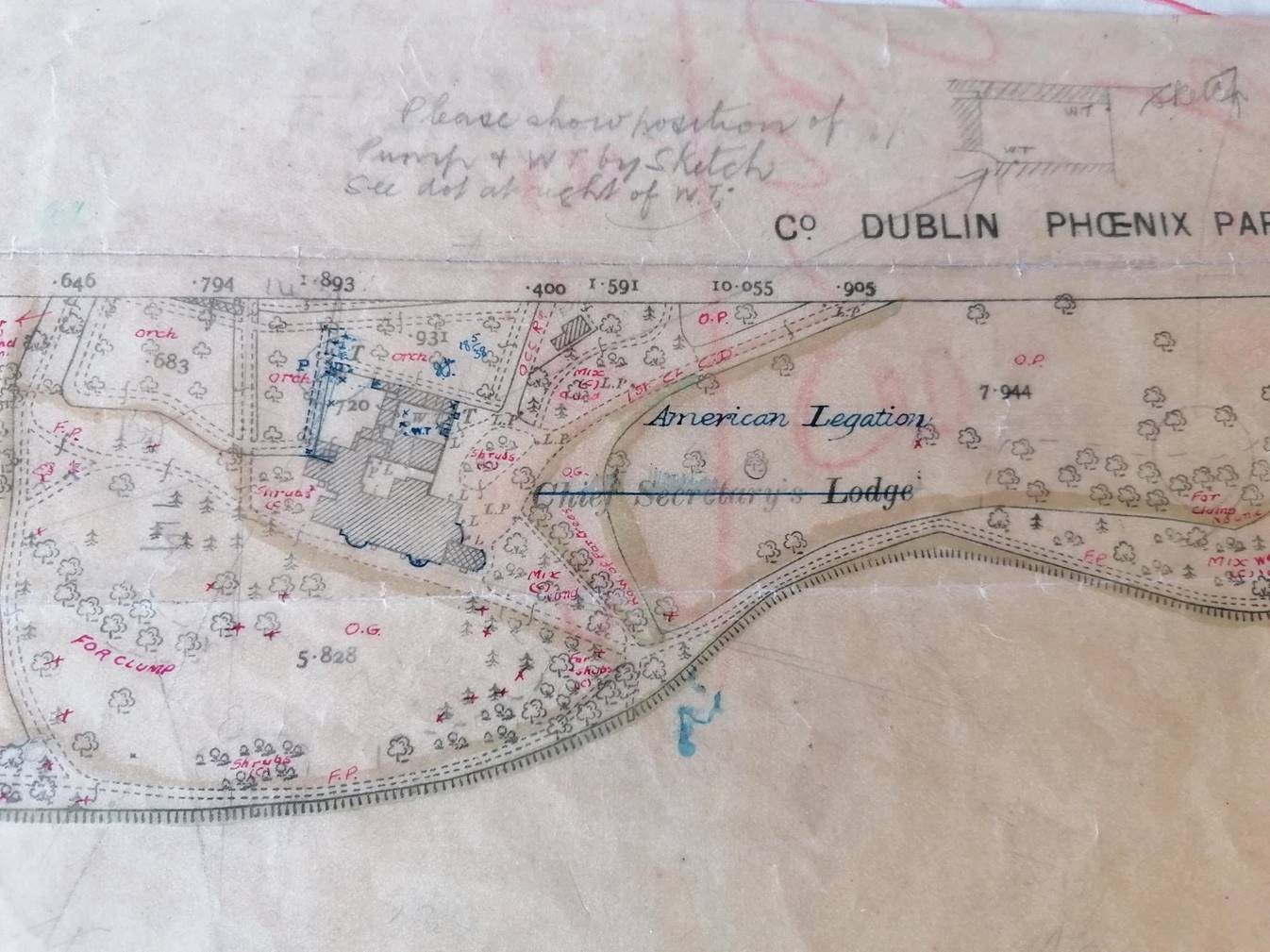
Original trace map with naming revisions
In the image above, the map has been revised to reflect what had been The Chief Secretary’s Lodge becoming The American Legation (Diplomatic Mission). The Royal Irish Constabulary Depot had become the Civic Guard Depot. The Viceregal Lodge changed to Governor General’s Residence. In 1937 with the ratification of a new constitution- Bunreacht na hÉireann, the name changed once again and became known as Áras an Uachtaráin or 'The Presidential Residence'. While many of the names from this period have stuck, the name 'O’Higgings Barracks' is no longer in use today.
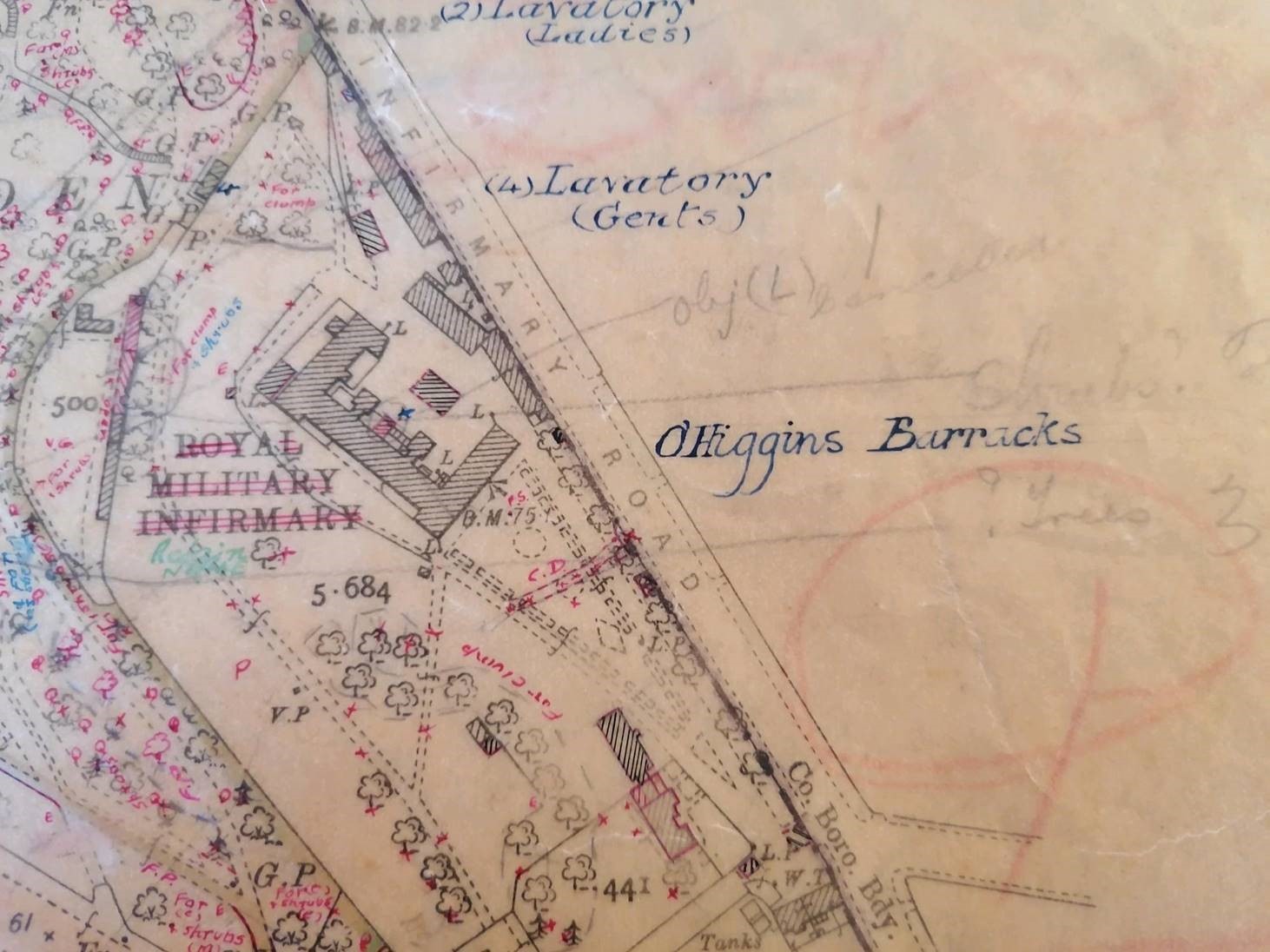
Original trace map outlining the ‘O’Higgings Barracks’ revision
A look in the Ordnance Survey 25 Inch Sheet Name Books shows that by 1936 the name had been changed to ‘Department of Defence’. The name changed from ‘Royal Military Infirmary’ to ‘O’Higgings Barracks’ and then to ‘Department of Defence’. Kevin O’Higgins who was assassinated in 1927 was one of the leaders of the Pro-treaty side in the Civil War. The name change may be a reflection of the fact that what had been the anti-treaty side formed the Government after achieving a majority in the 1932 general election.
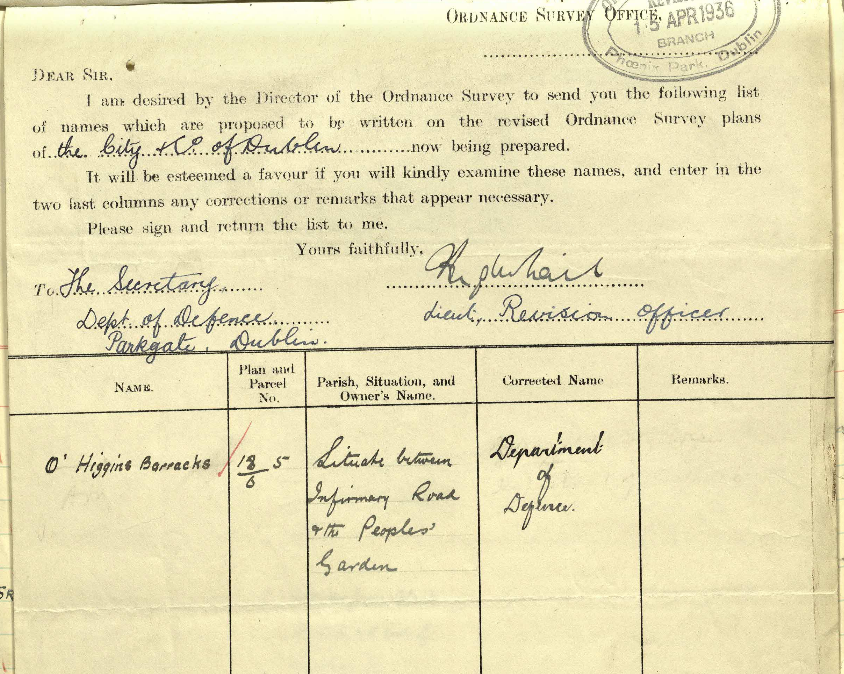
The original Sheet Name Books document dated 1936
Tourists come to Ireland
The Irish International Grand Prix races were a huge success in many respects. It caught the attention of international motorsport stars and car companies alike. It also shone a light on the potential the Phoenix Park offered to host big events which continued with the Centenary of Catholic Emancipation in June 1929 and the Eucharistic Congress of Dublin in 1932. The Grand Prix Motor Race map captured the traces of history made on the landscape, all of which are mere memories today.
Would you like to view more historical maps?
Maps can provide a fascinating and accessible insight into history.
By their nature, historic Ordnance Survey Ireland maps are a rich and easily understandable source of information. Maps of the same location published in different years provide an invaluable record of change over time.
You can access historic maps covering the entire country using Tailte Éireann’s Historical Map Viewer https://osi.maps.arcgis.com/apps/webappviewer/index.html?id=bc56a1cf08844a2aa2609aa92e89497e
Back to All
